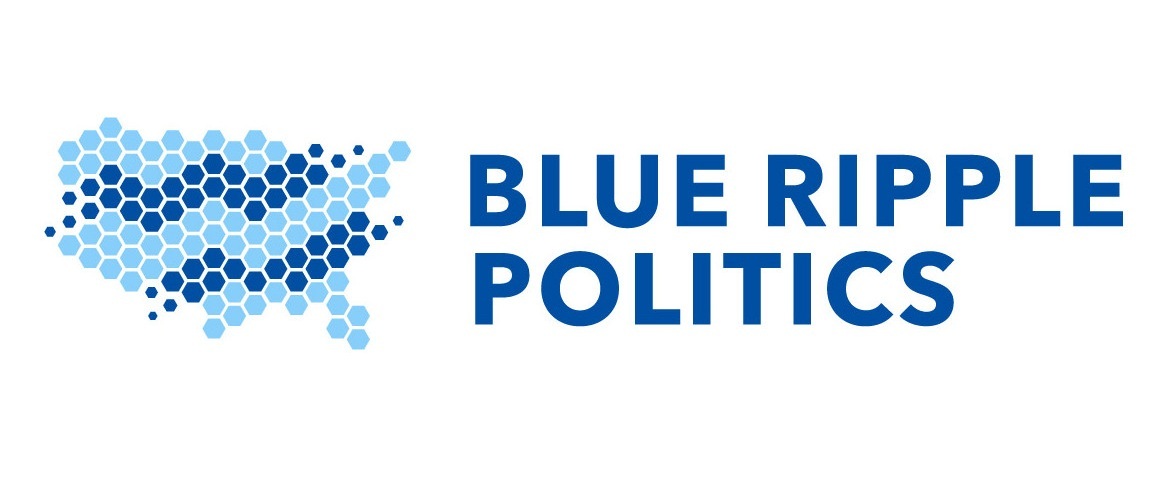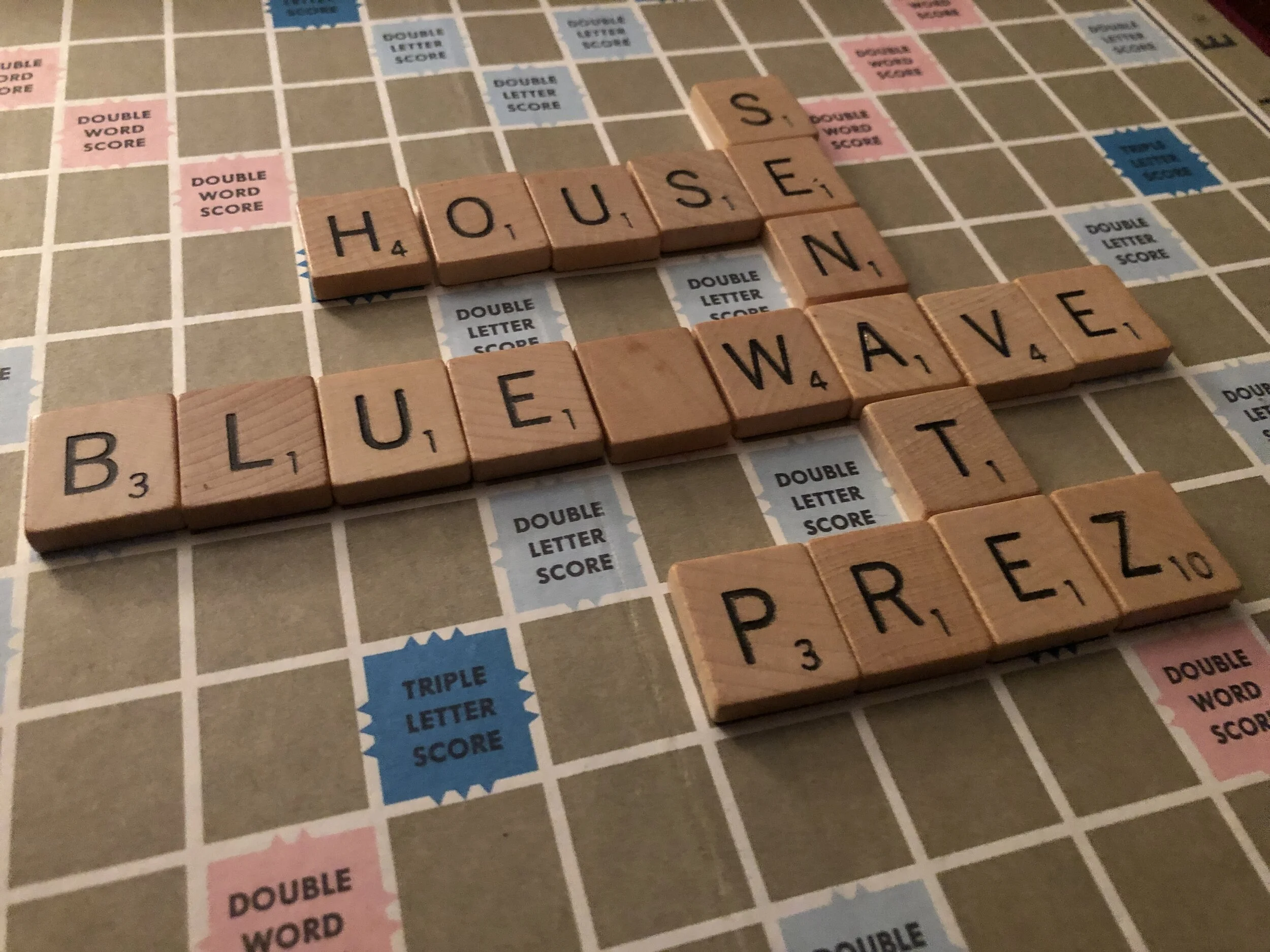Here at Blue Ripple, we love high-value donation opportunities, where the dollar you give will have an outsized impact. One way we find those is to focus on fundraising and spending data, to find races that aren’t overrun with dollars. That’s a big part of the approach we took to make our recommendations of 4 high-impact Senate candidates and 9 high-impact House candidates — please check those out if you haven’t already!
But another great way to have a big impact is to donate to down-ballot races that will yield up-ballot benefits in other races. A particularly great way to make your dollars go super-far is to donate to state legislature races with what we call “quadruple word score” benefits. In this this post, we’ll cover:
Why state legislature races are super high-impact donation opportunities
Why we focused on Georgia and Texas
How we made our list of high-impact state legislature campaigns
Our 10 picks for “quadruple word score” races to support
Why state legislature races are super-high-impact donation opportunities
If you want to stretch the impact of your donation dollar for Team Blue, look no further than key state legislature races. Here’s why:
Many of these state leg districts overlap with competitive House races, and if a Dem state legislature candidate gets an additional person to show up to the polls, that person will almost certainly vote Dem up-ballot. Keep that blue wave rolling!
And … if there’s a Senate race in that state as well, then odds are good the new Dem voter will also cast a ballot for that person, and help Team Blue win control of the upper chamber. Double happiness!
Aaaaaand … that new Dem voter will almost certainly vote for Biden at the top of the ticket, too, which could be crucial in Presidential battleground states. Triple bonus points!
Aaaaaaaaaaaaaaand … in many states, helping Dems win in the state legislature is crucial to prevent gerrymandering when district lines get redrawn nationwide after the Census. (Check out our earlier post about this here.) If you’re a Scrabbler, you’ve just hit the elusive quadruple word score!
A final practical reason to support state legislature candidates is that these are high bang-for-buck opportunities. The total dollars raised tend to be in the low six figures, so your $20 or $200 donation is a pretty big chunk of the budget compared to what it would be in a multi-million dollar House or Senate race. Also, state legislature campaigns are super-lean, so your dollars are paying for high-impact things like promotional materials, phone calls, and boots-on-the-ground outreach, not consultants and overhead. And finally, state legislatures are farm teams for seasoned candidates for House, Senate, and other offices in the future.
Why we focused on Georgia and Texas
To find the elusive quadruple word scores, we looked at Presidential battleground states with at least one competitive Senate race and several competitive House races, which are also one of 9 state legislatures being targeted by Flippable.org. That list includes 5 states: AZ, GA, MI, NC, and TX.
From that set, we decided to focus on GA and TX. One main reason was that each has a Senate race that’s a little bit of a longer shot for the Dems, but still possible (the special election in GA, and Hegar’s run in TX). So although we don’t think it makes great sense to send those candidates checks outright — see our Senate analysis for more on this topic — we love the idea of supporting them as part of a larger, quad-word-score effort.
We also like GA and TX because of the favorable trends in both of their state legislatures, and the impact that could have on the national stage. Both states have restrictive voting rights laws on the books, and by failing to rein in bad actors in their executive branches, their legislatures have also been complicit in vote suppression shenanigans driven by the Secretary of State and Governor. But Dems made big gains in both states in 2018, and Team Blue is within striking distance of breaking GOP trifectas in both the Peach State and the Lone Star State.
Finally, we are tickled by the idea of flipping these two states in particular. Both have been long-ignored by Team Blue as “unwinnable”, but their shifting demographics are finally catching attention from both the national media and the Biden campaign. We think investing in them in 2020 will pay dividends for Dems in 2020, and in the future as the Blue Wave continues to propagate across America.
How we made our list of high-impact state legislature campaigns
We did three things to pick our list of high-impact candidates in GA and TX. Briefly, we looked at:
How much overlap they had with competitive House districts (had to be at least 20%);
How “intrinsically Democratic” we think the underlying population is, based on our model of voter preferences (had to be at least 45%); and
How close the prior race was in that district (had to be within 10 points).
There’s a lot more to say about our methods, and we think the details of our “intrinsic Dem” calculation in particular are pretty cool, but we know you’re busy — so if you want to learn more, check out the footnote at the end of the post. But if not, just read on for the answer!
10 Dem state legislature candidates to support in GA and TX for “quadruple word score” impact
When the dust settled, we found 10 competitive state legislature races that we think are legit “quadruple word score” opportunities. For each one below, we’ve listed the “synergy” (fraction of the district that’s in a key House district), “intrinsic %D” (projected Dem fraction of the electorate based on our model), and prior election result. (NOTE: We have not individually vetted each of these candidates’ positions, backgrounds, etc.; if specific factors are of high importance to you, please do your own diligence.)
Here’s the list (“I” indicates incumbent):
| DISTRICT | CANDIDATE | SYNERGY | "INTRINSIC" %D | %D LAST ELECTION | NOTES |
| GA-HD-104 | Nakita Hemingway | 22% (GA-7) | 50% | 47% | |
| GA-HD-106 | Rebecca Mitchell | 36% (GA-7) | 62% | 0% | No D candidate in '18 |
| GA-SD-9 | Nikki Merritt | 61% (GA-7) | 58% | 48% | |
| GA-SD-40 | Sally Harrell (I) | 84% (GA-6) 16% (GA-7) |
48% | 55% | |
| TX-HD-65 | Michelle Beckley (I) | 63% (TX-24) | 46% | 51% | |
| TX-HD-92 | Jeff Whitfield | 90% (TX-24) | 47% | 47% | Open seat (now R) |
| TX-HD-102 | Ana-Maria Ramos (I) | 17% (TX-24) 83% (TX-32) |
46% | 53% | Rematch of '18 |
| TX-HD-108 | Joanna Cattanach | 1% (TX-24) 83% (TX-32) |
46% | 50% | Rematch of '18 |
| TX-HD-132 | Gina Calanni (I) | 40% (TX-7) 60% (TX-10) |
50% | 49% | Rematch of '18 |
| TX-HD-138 | Akilah Bacy | 32% (TX-7) | 48% | 50% | Open seat (now R) |
Let’s do this!
As we said, we love the idea of quadruple word scores — and we think these 10 races epitomize high-value donations. We think four of them are vulnerable incumbents — two are facing rematches against their prior challengers — and the other six are legit pick-up opportunities, including one that was unchallenged by Dems in 2018, and another that’s trying to win an open seat. And all have 22% to 100% up-ballot synergy with key House races, as well as trickle-up to the Senate and, of course, the Presidency. Please, don’t delay — send a few bucks to them today! It may be the highest-impact thing you do all election season.
Coda: Our wonky methods footnote
For all you data nerds out there: we’re here for you. Drop us an email if you want more details than what we’ve provided below.
We picked the specific House districts of interest based on ones ranked by Sabato as tossup-D, lean-D, tossup-R, or lean-R as of 10/10/2020. That list includes GA-6, GA-7, TX-7, TX-10, TX-24, and TX-32. We then calculated the fraction of each state legislative district (upper and lower chambers) in each of those districts, and found 53 with non-zero House overlap in Georgia, and 76 in Texas.
For each of these “synergistic” state legislative districts, we wanted to determine which races were “close” — but that’s hard, because there’s virtually no reliable polling at the state legislature level. So, we turned to our MR model of voter preference and turnout from the 2018 mid-term. Our simple model uses CCES/Census data to estimate the Voter Preference/Turnout of various demographic groups at the state-level, and uses national data to bolster the fit. We combine that information with an estimate of the 2018 demographics of each district. The census doesn’t provide updated demographics at the state legislative district level, so we use their smallest reporting unit, the PUMA (Public Use Microdata Area) — each PUMA contains about 100,000 people — by finding the overlap of each PUMA with each district. Using the estimated demographics to post-stratify, we estimate the “intrinsic %D,” the share of likely voters we think will vote Democratic. We are modeling things at the state level, so all the differences among districts are a result of different demographics, i.e., a different distribution of ages, sexes, races or education levels among the voting age population.
We used Ballotpedia to look how close the last election in each district was (in 2018, or 2016 for TX upper chamber races). We included “pickup” opportunities where the Dem got at least 45% of the vote in the last election, and “defense” ones where the Dem got no more than 55% last time.
Our final list excluded 4 “defense” opportunities with “intrinsic %D” over 50% (3 in GA, 1 in TX), because we figure these incumbents have the wind at their backs in terms of both underlying demographics and what we expect to be a Dem turnout surge this year.
Final note: We actually found one race, TX-HD-134, that should be a Dem pickup opportunity, but the incumbent Republican is running unopposed! It has 63% synergy with TX-7, and by our math it has an intrinsic Dem share of 52%. Note to Texas Dems: field a candidate here in 2022!
Photo by Sophia Lin-David and Frank David (Blue Ripple Politics).

